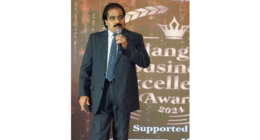Film Promotions: Then vs Now
In the dynamic landscape of the film industry, promotion has always been a crucial element in ensuring the success of a movie. Over the years, the methods and strategies employed for film promotions have undergone significant changes, reflecting the evolving nature of audience preferences, technological advancements, and the shifting dynamics of the entertainment industry.
Traditional film promotions in the past typically relied heavily on in-person events, such as premieres, press conferences, and promotional tours, where filmmakers and actors interacted directly with audiences and media representatives. Print media, including newspapers and magazines, played a central role in spreading the word about upcoming films through articles, interviews, and reviews. Additionally, theatrical trailers and posters were widely used to create buzz and generate interest in the audience.
Fast forward to the present day, and film promotions have experienced a radical transformation, largely driven by the advent of digital technology and the widespread use of social media platforms. Today, filmmakers and studios harness the power of the internet and social media to reach a global audience in real-time. Social media platforms like Facebook, Twitter, Instagram, and YouTube have become indispensable tools for promoting films, engaging with fans, and creating viral marketing campaigns.
One of the key differences between traditional and modern film promotions lies in the level of interactivity and engagement offered by digital platforms. Unlike the one-way communication of the past, social media allows filmmakers to have direct and instant contact with their audience, enabling them to receive feedback, address concerns, and tailor their marketing strategies based on real-time data and analytics.
The rise of influencers and content creators has also had a profound impact on film promotions in recent years. Influencers, who have amassed large followings on social media platforms, can wield significant influence over their audience’s purchasing decisions. As a result, studios often collaborate with influencers to create sponsored content, including reviews, behind-the-scenes footage, and promotional posts, to reach a wider and more targeted audience.
Moreover, the digital age has revolutionized the way in which trailers and teasers are released and consumed. Gone are the days of waiting for trailers to premiere in theaters or on television. Today, trailers are often launched online, sometimes with live events or interactive experiences to generate buzz and engage fans. The instant accessibility of trailers on social media and video-sharing platforms allows audiences to watch, share, and discuss them immediately, fueling anticipation and word-of-mouth promotion.
Another significant shift in film promotions is the growing emphasis on data-driven marketing strategies. By leveraging big data and analytics, studios can gain valuable insights into audience preferences, behavior patterns, and trends, allowing them to tailor their promotional campaigns for maximum impact. This data-driven approach enables studios to target specific demographics, personalize content, and optimize marketing spend, resulting in more efficient and effective promotions.
In addition to digital marketing, experiential marketing has emerged as a popular strategy for promoting films in the current era. Experiential marketing involves creating immersive and memorable experiences for fans through live events, pop-up activations, and interactive installations. By bringing the world of a film to life in the real world, studios can generate excitement, engage fans on a deeper level, and differentiate their promotions from competitors.
Despite the paradigm shift towards digital and experiential marketing, traditional forms of promotion still hold relevance in the modern film industry. Events like film festivals, award shows, and red carpet premieres continue to serve as important platforms for generating buzz, building prestige, and attracting critical acclaim. Print media, though diminished in influence, still plays a role in reaching older demographics and niche audiences.
In conclusion, the evolution of film promotions from traditional methods to modern digital strategies reflects the changing landscape of the entertainment industry. While the core objective of promoting a film remains the same – to reach, engage, and excite audiences – the tools, tactics, and technologies employed have evolved to meet the demands of a digitally savvy and globally connected audience. By embracing innovation, creativity, and data-driven insights, filmmakers and studios can navigate the ever-changing world of film promotions and connect with audiences in new and exciting ways.



